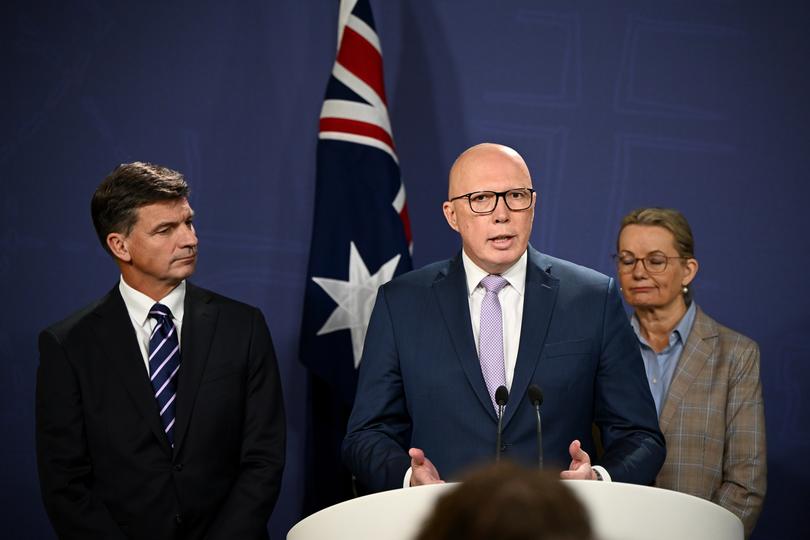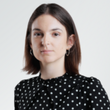Peter Dutton’s nuclear plan could be very costly or cheaper than renewables, depending on who you talk to

Peter Dutton’s plan to turn Australia nuclear by 2050 could carry a price tag of $100 billion, according to experts opposed to his proposal while others argue the energy source will provide “low-cost solutions” for customers.
After announcing on Wednesday his plan to build seven Commonwealth-owned nuclear reactors across the country, Mr Dutton still hasn’t revealed what the project would cost, beyond conceding that it would be a “big bill”.
But he has argued he believed the cost would be a “fraction” of Labor’s plan to rewire the country with renewables — an unknown total so far — and would lead to cheaper power prices in turn.
Sign up to The Nightly's newsletters.
Get the first look at the digital newspaper, curated daily stories and breaking headlines delivered to your inbox.
By continuing you agree to our Terms and Privacy Policy.Prime Minister Anthony Albanese continued his attack on Mr Dutton, saying his proposal was based on a vibe, and he had failed to release costings, modelling, or projections.
Mr Dutton said the Coalition would release the full details of its plan in “bite-sized chunks”, with shadow treasurer Angus Taylor assuring Australians they would know the full details before the next Federal election.
Critics say even if conservative estimates have formed part of the Coalition’s policy, given Mr Dutton’s plan amounts to about 6gW of energy once fully online, taxpayers could find the cost-benefit hard to swallow.
The CSIRO and AEMO last month published their annual GenCost report. Based on the capital cost of a large-scale nuclear plant in 2023 — $8655/kW — the agencies estimated it would cost a minimum $8.5b to build a large scale 1gW nuclear plant.
The report however warned the first power plant would likely be subject to a “first of its kind” premium, which could double the price to $17b.
Rob Parker from Nuclear for Climate said those numbers were “pretty reliable”.
“There’s no problem I have, or anyone that I know has, with that kind of costing. Of course, when you get into a fleet basis and you’re building a lot of them, the things get cheaper as you get into it,” he said.
“But that sort of level of costing would be pretty reliable.”
Small modular reactors, as Mr Dutton proposed for WA and SA, cost $28,581/kw in 2023. That’s expected to halve by 2050, to be about $14,478/kw.
While Liberal sources said they anticipated a cost of between $3.5b and $5b per small modular reactor (about 300mW), some experts said the cost of building an SMR would be just as expensive as building a 1gW power plant.
Electrical engineer Robert Barr said nuclear power would provide “low-cost solutions” for customers.
He said that unlike Labor’s plan to rewire the country with renewables like solar, wind and batteries, the infrastructure was already in place for nuclear — saving taxpayers potentially billions of dollars.
“My modelling, and I’ve modelled various systems, is when you get to very high levels of wind and solar generation, the transmission and integration costs become large, and the storage requirements become expensive,” he said.

“Having a compact grid, like what is proposed with nuclear, will have a very good flow-on effect for customers.”
University of Queensland economics professor John Quiggin said if the Coalition didn’t try to recoup the minimum $100b in capital costs, nuclear power could lead to cheaper electricity.
“But the question of how to determine power bills is up in the air, considering solar will still be a key part of the system,” he said.
“And then there is the question of whether they intend to recover the capital costs. If they put down $100b of public money and then just charge electricity at running costs, it could be cheap.
“But it would leave a $100b black hole.”
He said there were also questions about ongoing costs, particularly fuel, pointing out solar and wind did not incur those costs.
Physicist Ken Baldwin from ANU said while it was a “valuable argument” there wouldn’t need to be as many upfront transmission and storage costs when it came to nuclear, as opposed to renewables, it was important to look at the levelised cost of electricity.
“That’s when you spread the investment cost over the whole lifetime of the plant. And when you do that, according to the CSIRO’s GenCost report, nuclear is up to two times more expensive than renewables, even taking into account that renewables need more storage and transmission lines,” he said.
He also sought to dispel suggestions a small modular reactor would be cheaper than a large-scale plant.
“Sure, the dollar amount you spend on an SMR is less than the dollar amount of a 1gW plant, but in terms of how much it generates over its lifetime, it could become the same price,” Professor Baldwin said.
Given there are only a small number of small modular reactors currently in operation, he said it was hard to predict whether they would have the same lifetime as a big plant.
Climate Energy Finance director Tim Buckley said he was of the view the CSIRO had been conservative, suggesting Australian taxpayers were likely to be hit with a minimum $80b to $100b in capital costs for the entire project.
“On top of that, you’re looking at $30b to $50b for the rehabilitation in 60 years time when they have to be decommissioned, another $10b for upgrades and refurbishments in 30 years time,” he said.
“Then tens of billions of dollars for nuclear waste storage and containment … you’re talking about well north of $100b of capital investment.”
He said that based on what had happened with projects in Canada and the UK, Australia could anticipate a cost blowout of up to 300 to 400 per cent, and faced the possibility of delays of at least five years.
“(Shadow energy minister) Ted O’Brien talks about ‘look at Ontario they love nuclear’, but fails to mention it took 15 years to build, five years longer than planned, and cost 400 per cent more than they thought,” Mr Buckley said, referring to the plant that became operational in 1993.
He suggested a more relevant comparison may be the ongoing construction of the Hinkley Point C generator in the UK, which was originally expected to open in 2017 and cost $34b, but has been pushed out to 2031 and, with inflation, could cost up to $89b.
Mr Buckley questioned the Coalition’s claims that nuclear would lead to cheaper power bills, pointing to the GenCost report that predicted nuclear would produce electricity roughly twice as expensive as that from renewables.
“The power prices required to fund $100b in capital investment is obscene,” he said.

